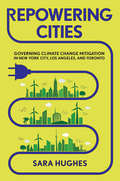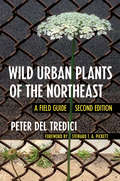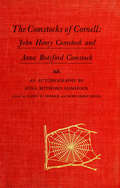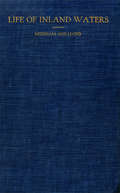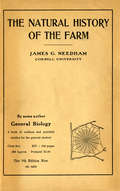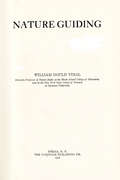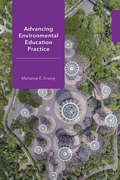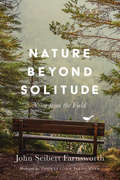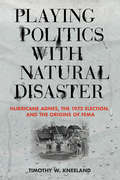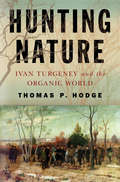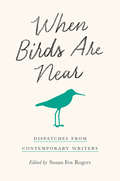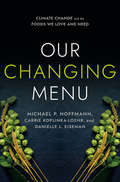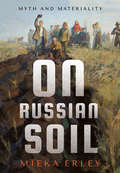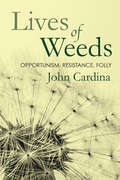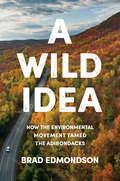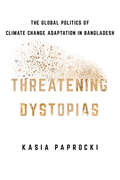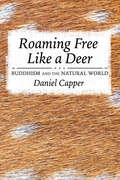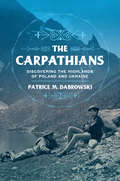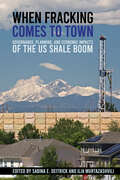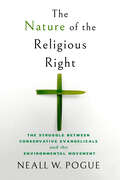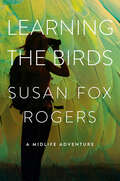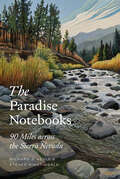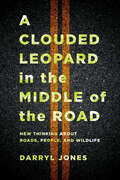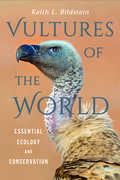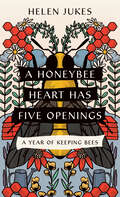- Table View
- List View
Repowering Cities: Governing Climate Change Mitigation in New York City, Los Angeles, and Toronto
by Sara HughesCity governments are rapidly becoming society's problem solvers. As Sara Hughes shows, nowhere is this more evident than in New York City, Los Angeles, and Toronto, where the cities' governments are taking on the challenge of addressing climate change.Repowering Cities focuses on the specific issue of reducing urban greenhouse gas (GHG) emissions, and develops a new framework for distinguishing analytically and empirically the policy agendas city governments develop for reducing GHG emissions, the governing strategies they use to implement these agendas, and the direct and catalytic means by which they contribute to climate change mitigation. Hughes uses her framework to assess the successes and failures experienced in New York City, Los Angeles, and Toronto as those agenda-setting cities have addressed climate change. She then identifies strategies for moving from incremental to transformative change by pinpointing governing strategies able to mobilize the needed resources and actors, build participatory institutions, create capacity for climate-smart governance, and broaden coalitions for urban climate change policy.
Wild Urban Plants of the Northeast: A Field Guide
by Peter Del TrediciIn this field guide to the future, esteemed Harvard University botanist Peter Del Tredici unveils the plants that will become even more dominant in urban environments under projected future environmental conditions. These plants are the most important and most common plants in cities. Learning what they are and the role they play, he writes, will help us all make cities more livable and enjoyable. With more than 1000 photos, readers can easily identify these powerful plants. Learn about the fascinating cultural history of each plant.
The Comstocks of Cornell: John Henry Comstock and Anna Botsford Comstock
by Anna Botsford ComstockThe Comstocks of Cornell is the autobiography written by naturalist educator Anna Botsford Comstock about her life and her husband's, entomologist John Henry Comstock—both prominent figures in the scientific community and in Cornell University history.A first edition was published in 1953, but it omitted key Cornellians, historical anecdotes, and personal insights. Karen Penders St. Clair's twenty-first century edition returns Mrs. Comstock's voice to her book by rekeying her entire manuscript as she wrote it, and preserving the memories of the personal and professional lives of the Comstocks that she had originally intended to share. The book includes a complete epilogue of the Comstocks' last years and fills in gaps from the 1953 edition. Described as serious legacy work, the book is an essential part of Cornell University history and an important piece of Cornell University Press history.
Life of Inland Waters: An Elementary Text Book of Fresh-Water Biology For Students
by James G. NeedhamThis work is a textbook of fresh-water life dealing with its forms, its conditions, its fitnesses, its associations, and its economic aspects. The ecologic side of fresh-water biology is emphasized. Due consideration is given to the educational, economic, sanitary, social, civic, and aesthetic aspects of the subject.Limnology in America today is in its infancy. The value of its past achievements is just beginning to be appreciated. The benefits to come from a more intensive study of water life arc just beginning to be disclosed. That there is a widespread interest is already manifest in the large number of biological stations at which limnological work is being done.We recommend this volume as a general introduction to all students and teachers of this subject.
Natural History of the Farm: A Guide to the Practical Study of the Sources of Our Living in Wild Nature
by James G. NeedhamThis is a guide to the practical study of the sources in wild nature of our living. It contains a series of study outlines for the entire year, and deals with both the plants and animals of the farm-the things that men have chosen to deal with as a means of livelihood and of personal satisfaction in all ages.
Nature Guiding
by William Gould VinalNature Guiding is the science of inculcating nature enthusiasm, nature principles, and nature facts into the spirit of individuals. "Doing" nature-study means observing, wondering, and solving problems. It could include collecting, building, measuring, painting, planning, writing, touching, experimenting or any of a wide range of other activities. Most importantly, it allows children to be "original investigators."This book is intended as a resource for teachers and students engaged in nature study at summer camps and in schools. William Gould Vinal believed that the teacher of nature study should be "in sympathy with the simple life and the country way," that the nature study should emphasize observation of the interactions of plants and animals in their environment, and not be reduced to matters of taxonomy and anatomy. In Nature Guiding, he offers advice to camp counselors and school teachers on incorporating nature study into everyday activities, as well as suggestions for parents and others about using visits to state and national parks to teach nature lore.
Advancing Environmental Education Practice (Cornell Series in Environmental Education)
by Marianne E. KrasnyIn this important intervention, change-agent Marianne E. Krasny challenges the knowledge-attitudes-behavior pathway that underpins much of environmental education practice; i.e., the assumption that environmental knowledge and attitudes lead to environmental behaviors. Krasny shows that certain types of knowledge are more likely than others to influence behaviors, and that generally it is more effective to work with existing attitudes than to try to change them. The chapters expand the purview of potential outcomes of environmental education beyond knowledge and attitudes to include nature connectedness, sense of place, efficacy, identity, norms, social capital, youth assets, and individual wellbeing.Advancing Environmental Education Practice also shows how, by constructing theories of change for their environmental education programs, environmental educators can target specific intermediate outcomes likely to lead to environmental behaviors and collective action, and plan activities to achieve those intermediate outcomes. In some cases, directly engaging program participants in the desired behavior or collective action can lead to changes in efficacy, sense of place, and other intermediate outcomes, which in turn foster future environmental actions. Finally, Advancing Environmental Education Practice shares twenty-four surveys that assess changes in environmental behaviors and intermediate outcomes, and provides guidelines for qualitative evaluations.Thanks to generous funding from the Cornell Department of Natural Resources, the ebook editions of this book are available as Open Access volumes from Cornell Open (cornellopen.org) and other Open Access repositories.
Nature beyond Solitude: Notes from the Field
by John Seibert FarnsworthJohn Seibert Farnsworth's delightful field notes are not only about nature, but from nature as well. In Nature Beyond Solitude, he lets us peer over his shoulder as he takes his notes. We follow him to a series of field stations where he teams up with scientists, citizen scientists, rangers, stewards, and grad students engaged in long-term ecological study, all the while scribbling down what he sees, hears, and feels in the moment. With humor and insight, Farnsworth explores how communal experiences of nature might ultimately provide greater depths of appreciation for the natural world.In the course of his travels, Farnsworth visits the Hastings Natural History Reservation, the Santa Cruz Island Reserve, the Golden Gate Raptor Observatory, the H.J. Andrews Experimental Forest, the North Cascades Institute's Environmental Learning Center, and more.
Playing Politics with Natural Disaster: Hurricane Agnes, the 1972 Election, and the Origins of FEMA
by Timothy W. KneelandHurricane Agnes struck the United States in June of 1972, just months before a pivotal election and at the dawn of the deindustrialization period across the Northeast. The response by local, state, and national officials had long-term consequences for all Americans. President Richard Nixon used the tragedy for political gain by delivering a generous relief package to the key states of New York and Pennsylvania in a bid to win over voters. After his landslide reelection in 1972, Nixon cut benefits for disaster victims and then passed legislation to push responsibility for disaster preparation and mitigation onto states and localities. The impact led to the rise of emergency management and inspired the development of the Federal Emergency Management Agency (FEMA).With a particular focus on events in New York and Pennsylvania, Timothy W. Kneeland narrates how local, state, and federal authorities responded to the immediate crisis of Hurricane Agnes and managed the long-term recovery. The impact of Agnes was horrific, as the storm left 122 people dead, forced tens of thousands into homelessness, and caused billions of dollars in damage from Florida to New York. In its aftermath, local officials and leaders directed disaster relief funds to rebuild their shattered cities and reshaped future disaster policies.Playing Politics with Natural Disaster explains how the political decisions by local, state, and federal officials shaped state and national disaster policy and continues to influence emergency preparedness and response to this day.
Hunting Nature: Ivan Turgenev and the Organic World
by Thomas P. HodgeIn Hunting Nature, Thomas P. Hodge explores Ivan Turgenev's relationship to nature through his conception, description, and practice of hunting—the most unquenchable passion of his life. Informed by an ecocritical perspective, Hodge takes an approach that is equal parts interpretive and documentarian, grounding his observations thoroughly in Russian cultural and linguistic context and a wide range of Turgenev's fiction, poetry, correspondence, and other writings. Included within the book are some of Turgenev's important writings on nature—never previously translated into English. Turgenev, who is traditionally identified as a chronicler of Russia's ideological struggles, is presented in Hunting Nature as an expert naturalist whose intimate knowledge of flora and fauna deeply informed his view of philosophy, politics, and the role of literature in society. Ultimately, Hodge argues that we stand to learn a great deal about Turgenev's thought and complex literary technique when we read him in both cultural and environmental contexts. Hodge details how Turgenev remains mindful of the way textual detail is wedded to the organic world—the priroda that he observed, and ached for, more keenly than perhaps any other Russian writer.
When Birds Are Near: Dispatches from Contemporary Writers
In this dazzling literary collection, writers explore and celebrate their lives with and love for birds—detailing experiences from Alaska to Bermuda, South Dakota to Panama. In When Birds Are Near, fresh new voices as well as seasoned authors offer tales of adventure, perseverance, and fun, whether taking us on a journey down Highway 1 to see a rare California Condor, fighting the destruction of our grasslands, or simply watching the feeder from a kitchen window.But these essays are more than just field notes. The authors reflect on love, loss, and family, engaging a broad array of emotions, from wonder to amusement. As Rob Nixon writes, "Sometimes the best bird experiences are defined less by a rare sighting than by a quality of presence, some sense of overall occasion that sets in motion memories of a particular landscape, a particular light, a particular choral effect, a particular hiking partner." Or, as the poet Elizabeth Bradfield remarks, "We resonate with certain animals, I believe, because they are a physical embodiment of an answer we are seeking. A sense of ourselves in the world that is nearly inexpressible." When Birds Are Near gives us the chance to walk alongside these avid appreciators of birds and reflect on our own interactions with our winged companions.Contributors: Christina Baal, Thomas Bancroft, K. Bannerman, R. A. Behrstock, Richard Bohannon, Elizabeth Bradfield, Christine Byl, Susan Cerulean, Sara Crosby, Jenn Dean, Rachel Dickinson, Katie Fallon, Jonathan Franzen, Andrew Furman, Tim Gallagher, David Gessner, Renata Golden, Ursula Murray Husted, Eli J. Knapp, Donald Kroodsma, J. Drew Lanham, John R. Nelson, Rob Nixon, Jonathan Rosen, Alison Townsend, Alison Világ
Our Changing Menu: Climate Change and the Foods We Love and Need
by Michael P. Hoffmann Carrie Koplinka-Loehr Danielle L. EisemanOur Changing Menu unpacks the increasingly complex relationships between food and climate change. Whether you're a chef, baker, distiller, restaurateur, or someone who simply enjoys a good pizza or drink, it's time to come to terms with how climate change is affecting our diverse and interwoven food system. Michael P. Hoffmann, Carrie Koplinka-Loehr, and Danielle L. Eiseman offer an eye-opening journey through a complete menu of before-dinner drinks and salads; main courses and sides; and coffee and dessert. Along the way they examine the escalating changes occurring to the flavors of spices and teas, the yields of wheat, the vitamins in rice, and the price of vanilla. Their story is rounded out with a primer on the global food system, the causes and impacts of climate change, and what we can all do. Our Changing Menu is a celebration of food and a call to action—encouraging readers to join with others from the common ground of food to help tackle the greatest challenge of our time.
On Russian Soil: Myth and Materiality (NIU Series in Slavic, East European, and Eurasian Studies)
by Mieka ErleyBlending close readings of literature, films, and other artworks with analysis of texts of political philosophy, science, and social theory, Mieka Erley offers an interdisciplinary perspective on attitudes to soil in Russia and the Soviet Union from the early nineteenth to the mid-twentieth century. As Erley shows in On Russian Soil, the earth has inspired utopian dreams, reactionary ideologies, social theories, and durable myths about the relationship between nation and nature.In this period of modernization, soil was understood as the collective body of the nation, sitting at the crux of all economic and social problems. The "soil question" was debated by nationalists and radical materialists, Slavophiles and Westernizers, poets and scientists.On Russian Soil highlights a selection of key myths at the intersection of cultural and material history that show how soil served as a natural, national, and symbolic resource from Fedor Dostoevsky's native soil movement to Nikita Khrushchev's Virgin Lands campaign at the Soviet periphery in the 1960s. Providing an original contribution to ecocriticism and environmental humanities, Erley expands our understanding of how cultural processes write nature and how nature inspires culture.On Russian Soil brings Slavic studies into new conversations in the environmental humanities, generating fresh interpretations of literary and cultural movements and innovative readings of major writers.
Lives of Weeds: Opportunism, Resistance, Folly
by John CardinaLives of Weeds explores the tangled history of weeds and their relationship to humans. Through eight interwoven stories, John Cardina offers a fresh perspective on how these tenacious plants came about, why they are both inevitable and essential, and how their ecological success is ensured by determined efforts to eradicate them. Linking botany, history, ecology, and evolutionary biology to the social dimensions of humanity's ancient struggle with feral flora, Cardina shows how weeds have shaped—and are shaped by—the way we live in the natural world. Weeds and attempts to control them drove nomads toward settled communities, encouraged social stratification, caused environmental disruptions, and have motivated the development of GMO crops. They have snared us in social inequality and economic instability, infested social norms of suburbia, caused rage in the American heartland, and played a part in perpetuating pesticide use worldwide. Lives of Weeds reveals how the technologies directed against weeds underlie ethical questions about agriculture and the environment, and leaves readers with a deeper understanding of how the weeds around us are entangled in our daily choices.
A Wild Idea: How the Environmental Movement Tamed the Adirondacks
by Brad EdmondsonA Wild Idea shares the complete story of the difficult birth of the Adirondack Park Agency (APA). The Adirondack region of New York's rural North Country forms the nation's largest State Park, with a territory as large as Vermont. Planning experts view the APA as a triumph of sustainability that balances human activity with the preservation of wild ecosystems. The truth isn't as pretty. The story of the APA, told here for the first time, is a complex, troubled tale of political dueling and communities pushed to the brink of violence. The North Country's environmental movement started among a small group of hunters and hikers, rose on a huge wave of public concern about pollution that crested in the early 1970s, and overcame multiple obstacles to "save" the Adirondacks. Edmondson shows how the movement's leaders persuaded a powerful Governor to recruit planners, naturalists, and advisors and assign a task that had never been attempted before. The team and the politicians who supported them worked around the clock to draft two visionary land-use plans and turn them into law. But they also made mistakes, and their strict regulations were met with determined opposition from local landowners who insisted that private property is private.A Wild Idea is based on in-depth interviews with five dozen insiders who are central to the story. Their observations contain many surprising and shocking revelations. This is a rich, exciting narrative about state power and how it was imposed on rural residents. It shows how the Adirondacks were "saved," and also why that campaign sparked a passionate rebellion.
Threatening Dystopias: The Global Politics of Climate Change Adaptation in Bangladesh (Cornell Series on Land: New Perspectives on Territory, Development, and Environment)
by Kasia PaprockiBangladesh is currently ranked as one of the most climate vulnerable countries in the world. In Threatening Dystopias, Kasia Paprocki investigates the politics of climate change adaptation throughout the South Asian nation. Drawing on ethnographic and archival fieldwork, she engages with developers, policy makers, scientists, farmers, and rural migrants to show how Bangladeshi and global elites ignore the history of landscape transformation and its attendant political conflicts. Paprocki looks at how groups craft economic narratives and strategies that redistribute power and resources away from peasant communities. Although these groups claim that increased production of export commodities will reframe the threat of climate change into an opportunity for economic development and growth, the reality is not so simple. For the country's rural poor, these promises ring hollow. As development dispossesses the poor from agrarian livelihoods, outmigration from peasant communities leads to precarious existences in urban centers. And a vision of development in which urbanization and export-led growth are both desirable and inevitable is not one the land and its people can sustain. Threatening Dystopias shows how a powerful rural movement, although hampered by an all-consuming climate emergency, is seeking climate justice in Bangladesh.
Roaming Free Like a Deer: Buddhism and the Natural World
by Daniel CapperBy exploring lived ecological experiences across seven Buddhist worlds from ancient India to the contemporary West, Roaming Free Like a Deer provides a comprehensive, critical, and innovative examination of the theories, practices, and real-world results of Buddhist environmental ethics. Daniel Capper clarifies crucial contours of Buddhist vegetarianism or meat eating, nature mysticism, and cultural speculations about spirituality in nonhuman animals. Buddhist environmental ethics often are touted as useful weapons in the fight against climate change. However, two formidable but often overlooked problems with this perspective exist. First, much of the literature on Buddhist environmental ethics uncritically embraces Buddhist ideals without examining the real-world impacts of those ideals, thereby sometimes ignoring difficulties in terms of practical applications. Moreover, for some understandable but still troublesome reasons, Buddhists from different schools follow their own environmental ideals without conversing with other Buddhists, thereby minimizing the abilities of Buddhists to act in concert on issues such as climate change that demand coordinated large-scale human responses. With its accessible style and personhood ethics orientation, Roaming Free Like a Deer should appeal to anyone who is concerned with how human beings interact with the nonhuman environment.
The Carpathians: Discovering the Highlands of Poland and Ukraine (NIU Series in Slavic, East European, and Eurasian Studies)
by Patrice M. DabrowskiIn The Carpathians, Patrice M. Dabrowski narrates how three highland ranges of the mountain system found in present-day Poland, Slovakia, and Ukraine were discovered for a broader regional public. This is a story of how the Tatras, Eastern Carpathians, and Bieszczady Mountains went from being terra incognita to becoming the popular tourist destinations they are today. It is a story of the encounter of Polish and Ukrainian lowlanders with the wild, sublime highlands and with the indigenous highlanders—Górale, Hutsuls, Boikos, and Lemkos—and how these peoples were incorporated into a national narrative as the territories were transformed into a native/national landscape.The set of microhistories in this book occur from about 1860 to 1980, a time in which nations and states concerned themselves with the "frontier at the edge." Discoverers not only became enthralled with what were perceived as their own highlands but also availed themselves of the mountains as places to work out answers to the burning questions of the day. Each discovery led to a surge in mountain tourism and interest in the mountains and their indigenous highlanders.Although these mountains, essentially a continuation of the Alps, are Central and Eastern Europe's most prominent physical feature, politically they are peripheral. The Carpathians is the first book to deal with the northern slopes in such a way, showing how these discoveries had a direct impact on the various nation-building, state-building, and modernization projects. Dabrowski's history incorporates a unique blend of environmental history, borderlands studies, and the history of tourism and leisure.
When Fracking Comes to Town: Governance, Planning, and Economic Impacts of the US Shale Boom
When Fracking Comes to Town traces the response of local communities to the shale gas revolution. Rather than cast communities as powerless to respond to oil and gas companies and their landmen, it shows that communities have adapted their local rules and regulations to meet the novel challenges accompanying unconventional gas extraction through fracking. The multidisciplinary perspectives of this volume's essays tie together insights from planners, legal scholars, political scientists, and economists. What emerges is a more nuanced perspective of shale gas development and its impacts on municipalities and residents. Unlike many political debates that cast fracking in black-and-white terms, this book's contributors embrace the complexity of local responses to fracking. States adapted legal institutions to meet the new challenges posed by this energy extraction process while under-resourced municipal officials and local planning offices found creative ways to alleviate pressure on local infrastructure and reduce harmful effects of fracking on the environment. The essays in When Fracking Comes to Town tell a story of community resilience with the rise and decline of shale gas production. Contributors: Ennio Piano, Ann M. Eisenberg, Pamela A. Mischen, Joseph T. Palka, Jr., Adelyn Hall, Carla Chifos, Teresa Córdova, Rebecca Matsco, Anna C. Osland, Carolyn G. Loh, Gavin Roberts, Sandeep Kumar Rangaraju, Frederick Tannery, Larry McCarthy, Erik R. Pages, Mark C. White, Martin Romitti, Nicholas G. McClure, Ion Simonides, Jeremy G. Weber, Max Harleman, Heidi Gorovitz Robertson
The Nature of the Religious Right: The Struggle between Conservative Evangelicals and the Environmental Movement
by Neall W. PogueIn The Nature of the Religious Right, Neall W. Pogue examines how white conservative evangelical Christians became a political force known for hostility toward environmental legislation. Before the 1990s, this group used ideas of nature to help construct the religious right movement while developing theologically based, eco-friendly philosophies that can be described as Christian environmental stewardship. On the twentieth anniversary of Earth Day in 1990, members of this conservative evangelical community tried to turn their eco-friendly philosophies into action. Yet this attempt was overwhelmed by a growing number in the leadership who made anti-environmentalism the accepted position through public ridicule, conspiracy theories, and cherry-picked science.Through analysis of rhetoric, political expediency, and theological imperatives, The Nature of the Religious Right explains how ideas of nature played a role in constructing the conservative evangelical political movement, why Christian environmental stewardship was supported by members of the community for so long, and why they turned against it so decidedly beginning in the 1990s.
Learning the Birds: A Midlife Adventure
by Susan Fox Rogers"The thrill of quiet adventure. The constant hope of discovery. The reminder that the world is filled with wonder. When I bird, life is bigger, more vibrant." That is why Susan Fox Rogers is a birder. Learning the Birds is the story of how encounters with birds recharged her adventurous spirit. When the birds first called, Rogers was in a slack season of her life. The woods and rivers that enthralled her younger self had lost some of their luster. It was the song of a thrush that reawakened Rogers, sparking a long-held desire to know the birds that accompanied her as she rock climbed and paddled, to know the world around her with greater depth. Energized by her curiosity, she followed the birds as they drew her deeper into her authentic self, and ultimately into love. In Learning the Birds, we join Rogers as she becomes a birder and joins the community of passionate and quirky bird people. We meet her birding companions close to home in New York State's Hudson Valley as well as in the desert of Arizona and awash in the midnight sunlight of Alaska. Along on the journey are birders and estimable ornithologists of past generations—people like Franklin Delano Roosevelt and Florence Merriam Bailey—whose writings inspire Rogers's adventures and discoveries. A ready, knowledgeable, and humble friend and explorer, Rogers is eager to share what she sees and learns. Learning the Birds will remind you of our passionate need for wonder and our connection to the wild creatures with whom we share the land.
The Paradise Notebooks: 90 Miles across the Sierra Nevada
by Richard J. Nevle Steven NightingaleIn The Paradise Notebooks, Richard J. Nevle and Steven Nightingale take us across the spectacular Sierra Nevada mountain range on a journey illuminated by incandescent poetry and fascinating fact.Over the course of twenty-one pairs of short essays, Nevle and Nightingale contemplate the natural phenomena found in the Sierra Nevada. From granite to aspen, to fire, to a rare, endemic species of butterfly, these essay pairs explore the natural history and mystical wonder of each element with a balanced and captivating touch. As they weave in vignettes from their ninety-mile backpacking trip across the range, Nevle and Nightingale powerfully reconceive the Sierra Nevada as both earthly matter and transcendental offering, letting us into a reality in which nature holds just as much spiritual importance as it does physical.In a time of rapid environmental degradation, The Paradise Notebooks offers a way forward—a whole-minded, learned, loving attention to place that rekindles our joyful relationship with the living world.
A Clouded Leopard in the Middle of the Road: New Thinking about Roads, People, and Wildlife
by Darryl JonesA Clouded Leopard in the Middle of the Road is an eye-opening introduction to the ecological impacts of roads. Drawing on over ten years of active engagement in the field of road ecology, Darryl Jones sheds light on the challenges roads pose to wildlife—and the solutions taken to address them. One of the most ubiquitous indicators of human activity, roads typically promise development and prosperity. Yet they carry with them the threat of disruption to both human and animal lives. Jones surveys the myriad, innovative ways stakeholders across the world have sought to reduce animal-vehicle collisions and minimize road-crossing risks for wildlife, including efforts undertaken at the famed fauna overpasses of Banff National Park, the Singapore Eco-Link, "tunnels of love" in the Australian Alps, and others. Along the way, he acquaints readers with concepts and research in road ecology, describing the field's origins and future directions. Engaging and accessible, A Clouded Leopard in the Middle of the Road brings to the foreground an often-overlooked facet of humanity's footprint on earth.
Vultures of the World: Essential Ecology and Conservation
by Keith L. BildsteinIn Vultures of the World, Keith L. Bildstein provides an engaging look at vultures and condors, seeking to help us understand these widely recognized but underappreciated birds. Bildstein's latest work is an inspirational and long overdue blend of all things vulture. Based on decades of personal experience, dozens of case studies, and numerous up-to-date examples of cutting-edge science, this book introduces readers to the essential nature of vultures and condors. Not only do these most proficient of all vertebrate scavengers clean up natural and man-made organic waste but they also recycle ecologically essential elements back into both wild and human landscapes, allowing our ecosystems to function successfully across generations of organisms. With distributions ranging over more than three-quarters of all land on five continents, the world's twenty-three species of scavenging birds of prey offer an outstanding example of biological diversity writ large. Included in the world's species fold are its most abundant large raptors—several of its longest lived birds and the most massive of all soaring birds. With a fossil record dating back more than fifty million years, vultures and condors possess numerous adaptions that characteristically serve them well but at times also make them particularly vulnerable to human actions. Vultures of the World is a truly global treatment of vultures, offering a roadmap of how best to protect these birds and their important ecology.
A Honeybee Heart Has Five Openings: A Year of Keeping Bees
by Helen JukesA Honeybee Heart Has Five Openings begins as Helen Jukes is entering her thirties and struggling to settle into her new job and home. Then friends gift her a colony of honeybees—a gift that, according to folklore, brings good luck—and Jukes embarks on the rewarding, perilous journey of becoming a beekeeper.Jukes writes about what it means to "keep" wild creatures and to live alongside beings whose laws of life are so different from our own. She delves into the history of beekeeping, exploring the ancient—and sometimes disturbing—relationship between keeper and bee, human and wild thing. And as her colony grows, the very act of beekeeping seems to open new perspectives, making her world come alive again. A beautifully wrought meditation on uncertainty and hope, feelings of restlessness and home, and how we might better know ourselves, A Honeybee Heart Has Five Openings shows us how to be alert to these small creatures flitting among us that are yet so vital a force for the continuation of life.
